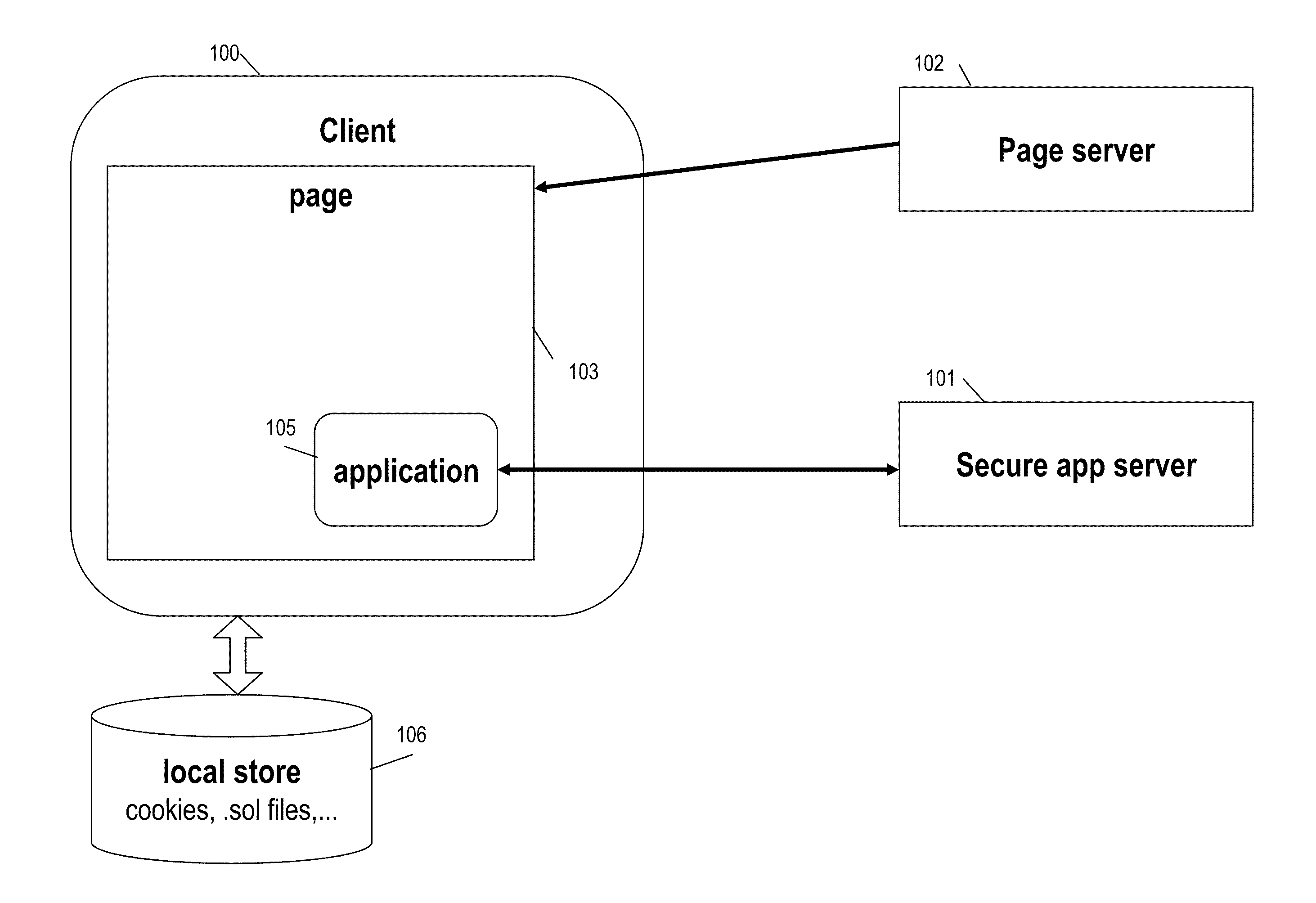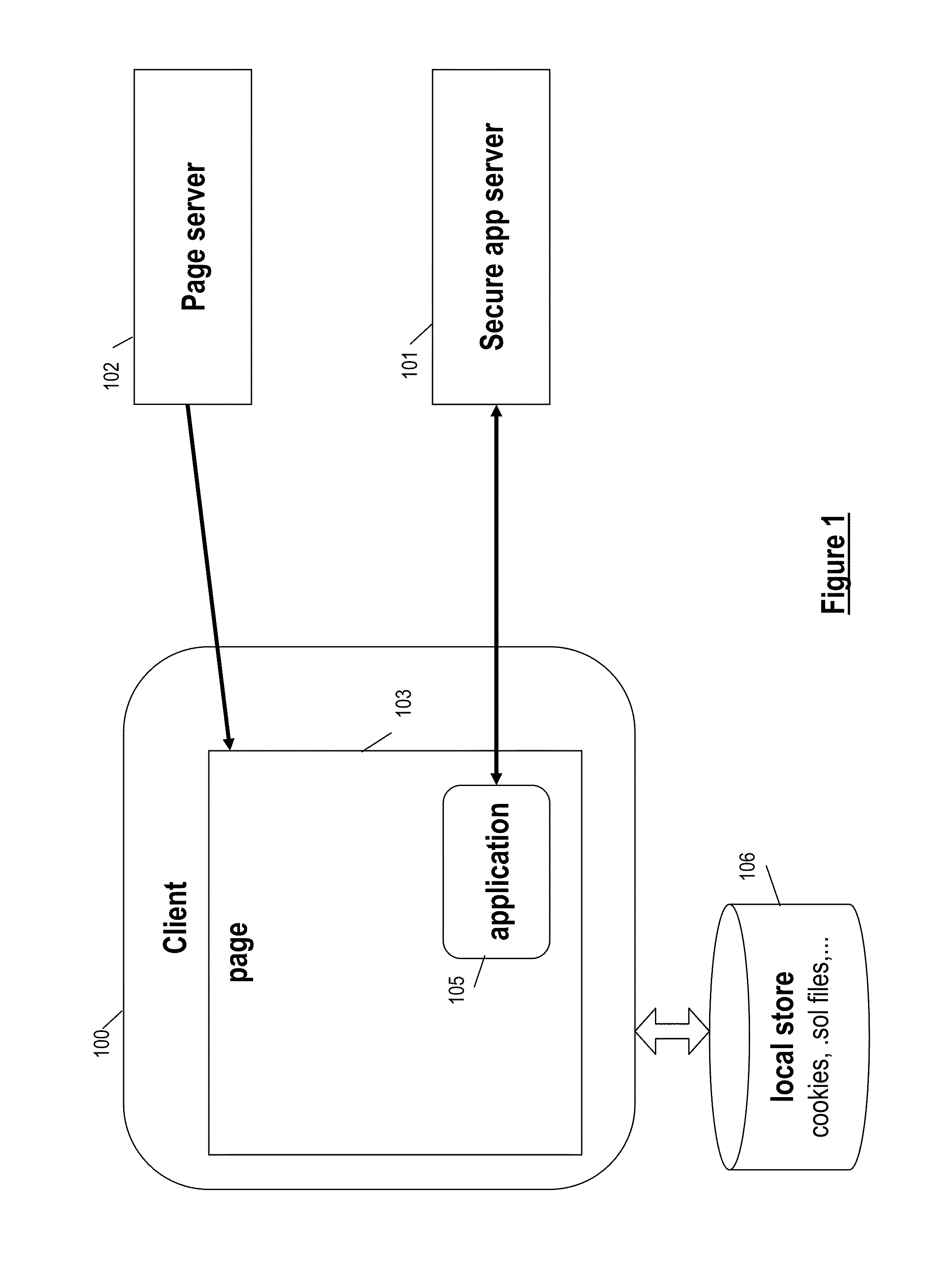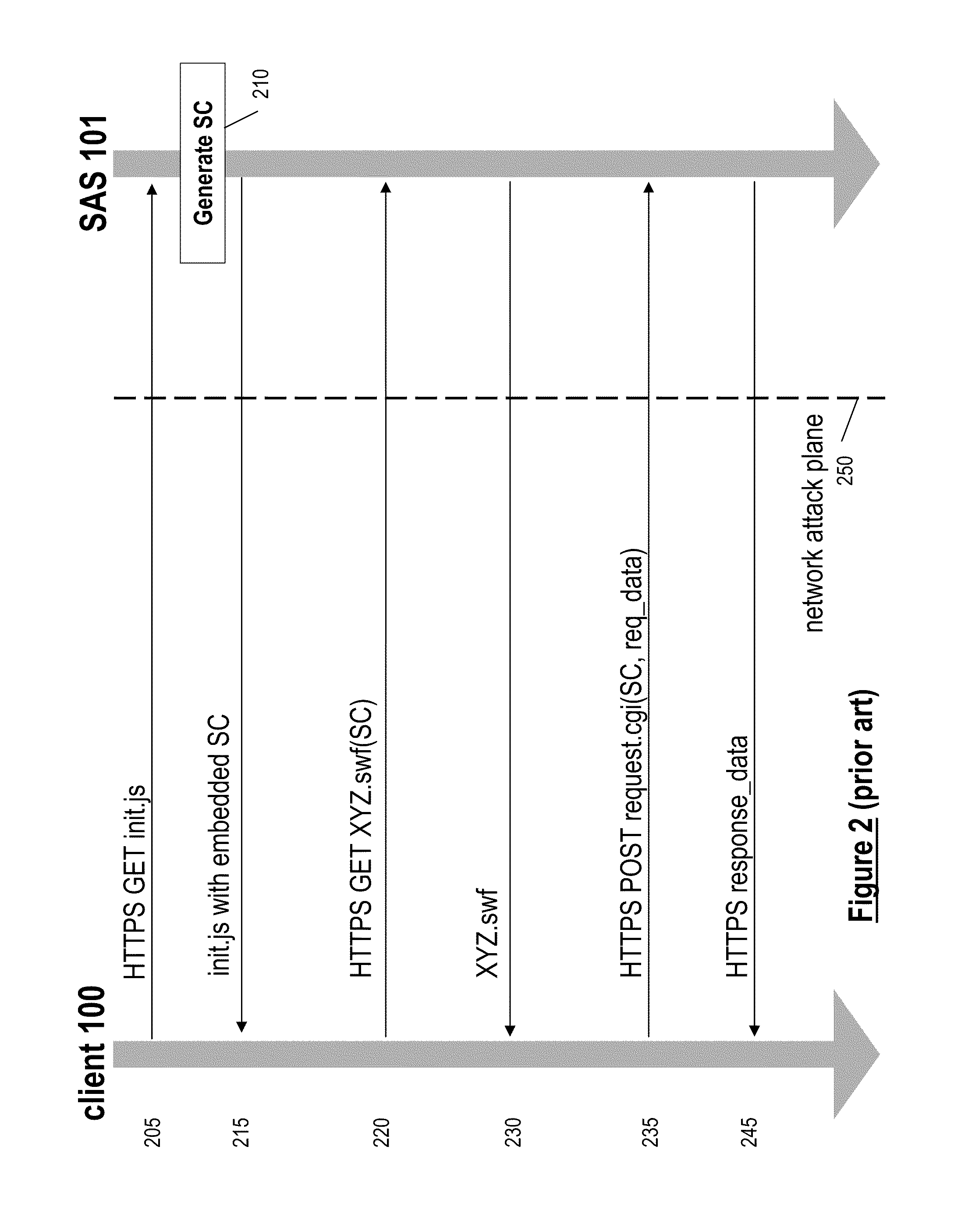Method for enhancing network application security
a network application and security technology, applied in the field of network application security enhancement, can solve the problems of application foolage, potential sensitive nature, and low network bandwidth, and achieve the effect of improving communication security
- Summary
- Abstract
- Description
- Claims
- Application Information
AI Technical Summary
Benefits of technology
Problems solved by technology
Method used
Image
Examples
first embodiment
[0048]FIG. 3 is a ladder flow diagram depicting communications between the client and the SA server in accordance with the present invention. The session credential information is generated as a security token in order to enable the SA server 101 to verify that the application making the request was downloaded into the specific context of the client browser session. For illustrative purposes, the browsing context can be considered to be any state-of-the-art web browser such as Mozilla Firefox (this will simply be referred to as the “client” or “browser” below).
[0049]As shown, the client makes a request 305 for JavaScript file init.js, as was done in message 205 of FIG. 2. The SA server 101 receives this HTTPS GET request and then calculates session credential information SC, in step 310. As described below, the SA server first computes a random value R and then generates SC(R). In particular, in a preferred embodiment, the session credential information SC is generated by SA server ...
second embodiment
[0088]FIG. 4 is a ladder flow diagram illustrating server-client communications in the invention in which application level encryption is provided by way of an additional cryptographic token. In FIG. 4, the initial messages and processing steps 305, 310, 315, and 320 occur exactly as in the protocol of FIG. 3.
[0089]The embodiment FIG. 4 differs from that of FIG. 3 in the computation used to deliver the unique instance of XYZ.swf to the client 100. This occurs in step 425. In this step, the SA server verifies SC and computes T1 in the same manner as in step 325 of FIG. 3. However, in step 425 the server further generates another security token T2 that is also tied to SC and T1. Both T1 and T2 are then embedded in application XYZ.swf and sent to the client in message 430. Again, as with FIG. 3, the values of T1 and T2 may be obfuscated in arbitrary ways.
[0090]When, in message 435, the application XYZ.swf requests sensitive data, the SA server once again validates T1 and SC for consist...
PUM
 Login to View More
Login to View More Abstract
Description
Claims
Application Information
 Login to View More
Login to View More - R&D
- Intellectual Property
- Life Sciences
- Materials
- Tech Scout
- Unparalleled Data Quality
- Higher Quality Content
- 60% Fewer Hallucinations
Browse by: Latest US Patents, China's latest patents, Technical Efficacy Thesaurus, Application Domain, Technology Topic, Popular Technical Reports.
© 2025 PatSnap. All rights reserved.Legal|Privacy policy|Modern Slavery Act Transparency Statement|Sitemap|About US| Contact US: help@patsnap.com



